Lance Morcan's Blog, page 6
June 26, 2025
Crime novel THE ME TOO GIRL now available as audiobook!
Our crime novel THE ME TOO GIRL, co-authored by Lance & James Morcan, is now available as an audiobook courtesy of Amazon’s Audible initiative for authors. (Listening length 3hrs).
To listen to the Introduction, click on “Virtual voice sample” at https://www.amazon.com/Audible-The-Me-Too-Girl/dp/B0F7N7VKSC/
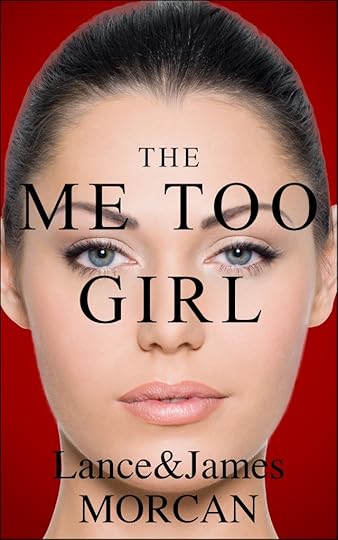
Young Los Angeles public relations exec Suzie Fox is being blackmailed for sex by a bad cop, a senior officer of the LAPD no less. Suzie fights back the only way she knows how, and, in the process, unwittingly becomes a beacon, a shining light, for America’s Me Too movement and for abused women everywhere. But will justice be served?
*
For those who prefer the printed word, the paperback version of THE ME TOO GIRL is available from Harvard Book Store, Waterstones UK & Europe bookstores, Barnes & Noble, Amazon and via public libraries.
*******************************************************
June 25, 2025
NEW ZEALAND: A NOVEL features in Amazon’s Top Reviews from the USA
“‘New Zealand: A Novel’, is more than just a historical saga,” according to US book critic Elisabet Norris whose review of this historical adventure features in this week’s ‘Top reviews from the United States’.
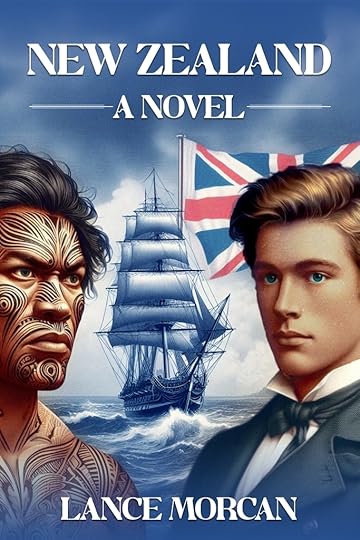
To read Norris’s full review go to: https://www.amazon.com/New-Zealand-Novel-Lance-Morcan/dp/0473728524/
Excerpts from her review follow:
“The story moves between two timelines: one following the Polynesian settlers leaving Hawaiki in the 1300s in search of new land, and the other tracing the journey of Nicholas Young, a young surgeon’s assistant aboard Captain Cook’s Endeavour in the 18th century. Seeing the story unfold from both perspectives makes it clear that history isn’t only shaped by famous explorers and leaders, but also by ordinary people caught up in extraordinary events.
“Morcan’s descriptions of Māori customs, intertribal conflicts, and the dangers of early sea voyages feel well-researched and engaging storytelling, yet the historical detail never overwhelms the narrative. The friendship between Nicholas and Moki, a young Māori warrior, adds a personal, human layer to what could have just been a story about cultures in conflict. Their bond offers one of the few moments of understanding and respect in a time full of mistrust and violence…
“…At its heart, this is a novel about discovery — of new lands, new cultures, and of oneself. It left me thinking not just about New Zealand’s early history, but about the timeless human instinct to explore, to clash, and to find connection across differences. A vivid, compelling historical novel that still feels relevant today.”
*
New Zealand: A Novel paperback is also available via Harvard Book Store, Waterstones UK & Europe bookstores, Kete Books NZ and via public libraries. An audiobook version is also available via Amazon (listening time: 11hrs. 25mins.).
******************************************************
June 24, 2025
MEDICAL INDUSTRIAL COMPLEX now available as audiobook!
Medical Industrial Complex: The $ickness Industry, Big Pharma and Suppressed Cures – Book 3 in our Underground Knowledge Series – is available now as an audiobook.
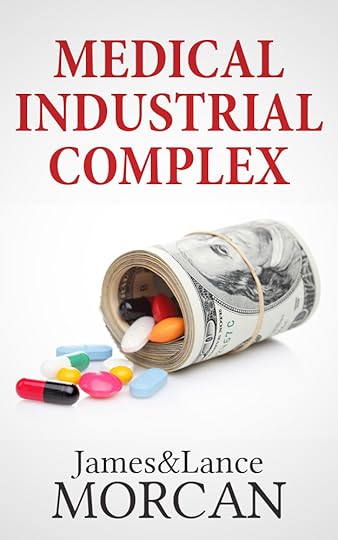
To listen to the introduction, click on “Virtual voice sample” in panel below the cover image via https://www.amazon.com/dp/B0FF8GV1RQ/
Listening length is 4 hours 49 minutes.
This explosive book is Book 3 in our Underground Knowledge Series. It’s a no-holds barred critique of mainstream medicine and the various players who make up one of the largest and most profitable industries on the planet. We, the authors, explore the contention that Big Pharma and other participants in the healthcare sector put profits ahead of patients’ wellbeing and dollars ahead of lives.
★★★★★ “The authors make us aware of that there are other interests at stake than that of the patient, such as money. The health industry is no exception to the corruptions that exists in pretty much every field in the world at the present time or in the past….and most likely any future field as well. This book helps put much of the information out there into perspective. It’s not telling us what to think or what to do but rather making us aware of the information out there so we can make better sense of it all and feel more power within our own choices…This book is a great guideline of what to look for or what to question when it comes to this industry.” –Elisabet Norris, Scientist
Other formats for Medical Industrial Complex include paperback and Kindle ebook. The paperback is available via Harvard Book Store, Waterstones UK & Europe bookstores, Barnes & Noble, Amazon and via public libraries.
****************************************************
June 23, 2025
Crime thriller SILENT FEAR now available as an audiobook!
Our critically acclaimed crime thriller SILENT FEAR (A novel inspired by true crimes) is available now as an Amazon audiobook. To listen to the novel’s chilling prologue, visit the following link then click on “Virtual voice sample” in the panel below the cover image… https://www.amazon.com/Silent-Fear-novel-inspired-crimes/dp/B0FDKZL7LL/
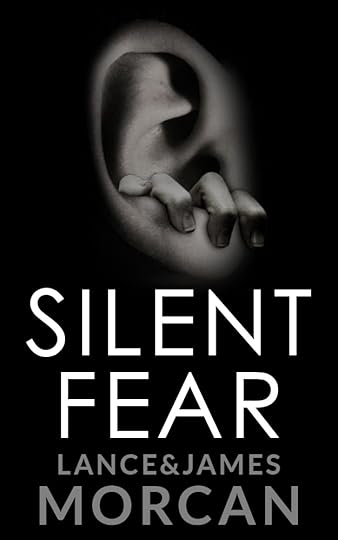
Scotland Yard detective Valerie Crowther is assigned to investigate the murder of a student at a university for the Deaf in London, England. The murder investigation coincides with a deadly flu virus outbreak, resulting in the university being quarantined from the outside world. When more Deaf students are murdered, it becomes clear there is a serial killer operating within the sealed-off university. A chilling cat-and-mouse game evolves as the unknown killer targets Valerie and the virus claims more lives.
SILENT FEAR has 272 global ratings on Amazon with an average review rating of 4.2 out of 5 stars.
According to Amazon, “Customers find the book’s plot engaging, with one mentioning an unexpected twist at the end, and appreciate its suspenseful nature, with one noting it kept them on edge throughout. The book receives positive feedback for its insight, with one review highlighting its deep and methodical investigation, and customers like the character development, with one praising the strong female protagonist. The book has many twists and turns, and customers consider it a great read…”
*
For those who prefer to read novels, the paperback version of SILENT FEAR is available via Harvard Book Store, Waterstones UK & Europe bookstores, Barnes & Noble, Amazon and via public libraries.
************************************************************
June 22, 2025
Recently released NEW ZEALAND: A NOVEL now available as audiobook
My historical adventure New Zealand: A Novel is available now as an Amazon audiobook. To listen to the novel’s prologue, click on “Virtual voice sample” in the panel below the cover image accessed via the following link… https://www.amazon.com/Audible-New-Zealand-A-Novel/dp/B0FDKR59JJ/

The prologue, set around 1300 AD, shows the destruction wreaked upon Hawaikans in the Pacific Island nation of Hawaiki after being attacked by enemies from a neighbouring island. Plagued by violence, crop failures and low fish stocks, they prepare to flee across the ocean to a land far to the south. A land that will one day be called Aotearoa New Zealand; a land that will be home to their warlike descendants who will call themselves Maori, and to whites who the indigenous people will refer to as Pakeha.
Other formats for New Zealand: A Novel include paperback and hardcover as well as Kindle ebook. The print versions are available via Harvard Book Store, Waterstones UK & Europe bookstores, Barnes & Noble, Amazon and via public libraries.
***********************************************************
June 21, 2025
Bestselling historical adventure INTO THE AMERICAS now available as audiobook
Our bestselling historical adventure novel INTO THE AMERICAS is available now as an Amazon audiobook. To listen to the novel’s prologue, click on the “Virtual voice sample” in the panel below the cover image accessed via the following link…
So far, 19 of our books – fiction and nonfiction / co-authored and solo-authored – have been uploaded to Amazon’s Audiobook with more to come.

INTO THE AMERICAS (A novel based on a true story) is a gritty, real-life adventure based on one of history’s greatest survival stories. It was inspired by the diary entries of young English blacksmith John Jewitt during his time aboard the brigantine The Boston and also during his sojourn as a captive of the First Nations people at Nootka Sound, on North America’s western seaboard, from 1802 to 1805.
This novel has 925 global ratings and a 4.4 out of 5-star rating on Amazon.
According to Amazon’s A.I. summary: “Customers find this book an enjoyable and captivating read based on historical facts, with well-developed characters and a fast-paced narrative that draws readers into the excitement. The writing style receives positive feedback, and customers appreciate the historical notes that add clarity to the story.”
To view all our books, go to Amazon author page at https://www.amazon.com/stores/Lance-Morcan/author/B005ET3ZUO
*****************************************************
June 19, 2025
THE HEATHROW AFFAIR aviation thriller-romance novel now available as an audiobook
by Lance Morcan
My aviation thriller-romance novel THE HEATHROW AFFAIR, co-authored with James Morcan, is now available as an audiobook, marking the first of our novels to be adapted from a Kindle ebook to an audiobook courtesy of Amazon’s Audible initiative for authors. (Listening length 2hrs 40mins).
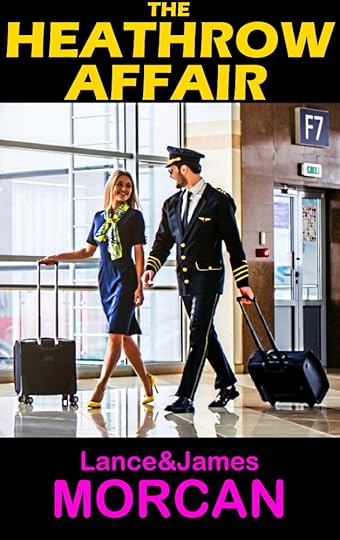
Note you can click on the “Virtual voice sample” panel to listen to the opening chapter.
THE HEATHROW AFFAIR is about John Woods, a young airline engineering apprentice who seems to have it all – a career he loves and the girl of his dreams. But all is not what it seems in this aviation love triangle…
John’s life is turned upside down when his beloved Sandra announces she’s leaving him for a dashing pilot employed by the same international airline John works for. When John is blamed for a mid-air incident that has catastrophic consequences for one of the airline’s aircraft, he and Sandra are reunited in a way neither could ever have imagined.
Ranked Amazon reviewer Grady Harp says: “The novel sets flight on an immensely entertaining romance adventure!”
Amazon reviews states” “The story is original, moves at a fast pace with romance, psychologically charged and intense moments…I was hooked from the first page.”
Ranked Amazon Australia reviewer Todd Simpson writes: “The thing I like the most is the story took a turn that I wasn’t expecting, and it certainly hit me between the eyes!!”
*
We are adapting all our books (fiction and nonfiction) to audiobooks and will notify our followers accordingly. Watch this space!
For those who prefer the printed word, the paperback version of THE HEATHROW AFFAIR is available from Harvard Book Store, Waterstones UK & Europe bookstores, Barnes & Noble, Amazon and via public libraries.
*******************************************************
June 18, 2025
Morcan novels and nonfiction books selling now via the iconic Harvard Book Store
by Lance Morcan
It’s with pleasure we, my co-writer James Morcan and I, can announce that our books – fiction and nonfiction – are available now at Massachusetts’ Harvard Book Store (pictured) in Cambridge, MA. They can be viewed at https://www.harvard.com/search/site/Lance%20Morcan
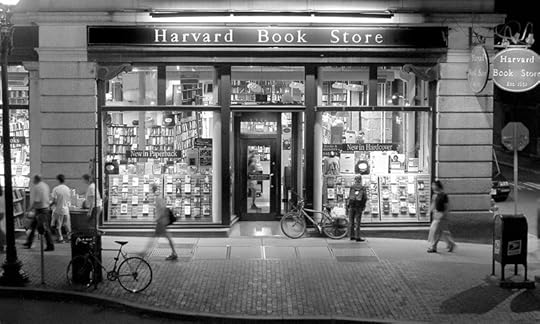
Harvard Book Store is a unique and special place to shop—a locally owned, independently run Cambridge landmark since 1932. As this iconic store’s own website states: “Our bookstore is known for an extraordinary selection and thoughtful curation of new, used, and remaindered books; an award-winning author event series; wildly popular warehouse sales; and a history of innovation.”
Among our bestselling nonfiction books available at Harvard Book Store are: Debunking Holocaust Denial Theories, Vaccine Science Revisited, The Catcher in the Rye Enigma and Genius Intelligence.
Among our novels available at the store are the critically acclaimed Into the Americas, White Spirit, Silent Fear and The Ninth Orphan. My solo-authored new release historical adventure New Zealand: A Novel is also available.
*
Morcan books (co-authored and solo-authored) are also available via Waterstones UK & Europe bookstores, Barnes & Noble, Amazon and via public libraries.
*****************************************************************
June 17, 2025
‘Genius Intelligence’ addresses the definition of a genius in this modern world of ours
The word “genius” is bandied about a lot these days, the term being eagerly applied to all sorts of people for all sorts of reasons. I’m in no doubt my definition of “genius” differs to yours and, indeed, to the definition held by many. This is not necessarily a sign we are right or wrong. Rather, it’s a reflection, perhaps, of the perception the modern world has of genius.
We address this in a passage titled Connecting the dots in GENIUS INTELLIGENCE: Secret Techniques and Technologies to Increase IQ – book one in our Underground Knowledge Series. ( Available now at Harvard Book Store ).
In bygone eras the term “genius” was most used when describing brilliant artists like Leonardo da Vinci. Then, in the 20th Century, the term was more often reserved for academics like Albert Einstein. Now, in the 21st Century, it has assumed a broader meaning and is applied to individuals who have achieved extraordinary results in a wide variety of careers, pastimes and fields of endeavor that transcend academia.
Increasingly, we see references in the media and elsewhere to scientific genius or artistic genius or sporting genius, which supports this evolving definition of the word.
Certainly, dictionary definitions (of genius) allow for a broad interpretation. For example, common dictionary definitions include “exceptional intellectual or creative power or other natural ability” and “an exceptionally intelligent person or one with exceptional skill in a particular area of activity.”
A cursory look at our Thesaurus offers mastermind, prodigy, brain, intellect, virtuoso and even whiz kid as alternatives to the word genius.
For what it’s worth, our definition of genius is: Someone who demonstrates rare intellect, who successfully connects dots between seemingly unconnected things and who sees what others don’t to achieve revolutionary outcomes and extraordinary results.
We remind readers what German philosopher Arthur Schopenhauer said about genius: “Talent hits a target no one else can hit. Genius hits a target no one else can see.”
It’s obvious to us that little-known accelerated learning techniques do exist in one form or another – techniques (and technologies) capable of increasing IQ. It should also be obvious that geniuses aren’t usually born geniuses, or, to put it another way, they aren’t necessarily born geniuses. Having studied the lives of numerous geniuses, we were surprised to discover most utilized – or, from a young age, were exposed to – various brain activation methods on their respective journeys to becoming acknowledged masters of their fields.
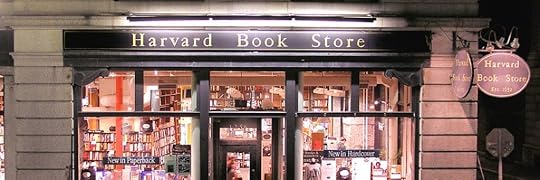
GENIUS INTELLIGENCE: Secret Techniques and Technologies to Increase IQ (below) is available via Harvard Book Store (above) at https://www.harvard.com/book/9780473318499

[image error]
Genius Intelligence also available via Waterstones UK & Europe, Barnes & Noble, Inc. bookstores, Amazon Kindle (and paperback) and via public libraries.
***************************************************************************
June 3, 2025
‘Vaccine Science Revisited’ authors question manufacturers’ persistence in adding Formaldehyde to childhood vaccines
Why do vaccine manufacturers persist in adding Formaldehyde (FA) or Formalin (the liquid form of formaldehyde) to vaccines when many scientists have expressed concern about injecting embalming fluid into the bodies of infants?

My co-author and I pose this question in a chapter titled Formaldehyde – The demolition crew in our book VACCINE SCIENCE REVISITED: Are Childhood Immunizations as Safe as Claimed?
In certain vaccines, formaldehyde is used to “inactivate viruses and to detoxify bacterial toxins.” However, we learned that in the making of these vaccines it’s impossible to extract all the toxins. There will always be some residual toxins left in the vaccine. When it comes to formaldehyde, this can be 0.02% FA or less.
As with other chemicals, the various forms should not be confused. We mentioned that formaldehyde becomes formalin when in liquid. To be more specific, when methyl alcohol is added to formaldehyde, it becomes formalin. A solution that’s 10% formalin, is actually 3.7-4% formaldehyde.
In researching vaccine safety generally, we struggle to understand how so many scientific studies out there can be studying the exact same thing, yet their conclusions completely contradict each other. Formaldehyde studies are no exception. If each study can be replicated by a third party in the laboratory, how can the results vary so greatly?
What’s not in dispute is that our bodies produce formaldehyde naturally. This makes it difficult to determine how safe formaldehyde in vaccines really is. Formaldehyde can damage our cells, but at the same time it can defend the cells against damage. In the latter case, our body breaks the formaldehyde down into smaller pieces. These smaller pieces are no longer formaldehyde, but are now formate. The cell uses formate to create more DNA.
Some health professionals are concerned about accumulation of formaldehyde in the body. For example, Sherri Tenpenny, Doctor of Osteopathic Medicine (DO), who has great insight into the field of natural health, argues that by the time a child is five, they have received 1.795 mg formaldehyde.
Dr. Tenpenny says, “Through sloppy and negligent math, lawmakers and manufacturers fail to throw up a red flag regarding the large amount of formaldehyde injected into young bodies with developing brains, neurological systems and organs.”
We found a study that measured accumulated formaldehyde in the brain. It showed that the more it accumulates, the less there will be “cognitive abilities during human aging”. The more severe the dementia in Alzheimer’s disease patients, the higher the formaldehyde accumulation.
The list of concerns goes on. We list some of them for our readers. All claims, links and references to scientific and medical papers, official statements and news reports are tabled at the end of each chapter.
***
Vaccine Science Revisited is available via Barnes & Noble bookstores, public libraries and via Amazon. It continues to be one of the bestselling books our contentious Underground Knowledge Series.
*******************************************************



